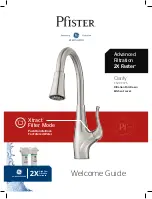
T: +44(0)161 430 6618
2
General Considerations
When planning the installation of emergency safety showers and eye/face wash equipment, the advice of a qualified first
aid representative or medical advisor should be sought to establish the most suitable location and procedures for first aid
and decontamination.
Installation should be in accordance with local legislation and industry standards such as EN15154 and/or
ANSI Z358.1-2014 recommendations. Visit www.hughes-safety.com/standards for more information.
•
Emergency safety showers and eye/face wash equipment must be installed within 20 metres, or 10 seconds reach
of, and on the same level as, a potential hazard. Where strong acids or caustics are used, equipment must be
immediately adjacent to the hazard and outside of any spray paths.
•
Equipment must be in a prominent position, free from any obstructions and clearly visible.
•
Adequate drainage should be available in the area around and underneath the safety shower or eye/face wash.
Consideration should be given to the placement of equipment in the vicinity of the safety shower that are sensitive
to water or diluted chemicals, notably electrical items.
•
For equipment located indoors, wastewater must be contained for subsequent safe disposal or there must be
adequate drainage. Procedures must be in place for cleaning residue water after safety shower use.
•
Loose objects or gravel should not obstruct the operation of the shower where walk-on foot panels or foot treadles
are fitted.
•
An ISO 3864.1 compliant safety sign should be displayed on or near the safety shower or eye wash. The sign
should be well positioned so it is visible to all within the hazardous area.
•
The area must always be well lit with the operating mechanism remaining clearly visible.
Installation and Commissioning
Equipment can be mounted to a suitable level surface using bolts of a length and type to suit the base material. Please refer
to the general arrangement drawings for position of fixing bolt holes.
If required the shower is light enough to be moved easily to wherever decontamination facilities are needed. As the flow rate
is relatively low, water can be supplied by a hose-pipe connected to the unit’s inlet manifold.
Once mounted, the stability should be tested to ensure it is safe and poses no danger to the user.
Location & Accessibility
Visibility
Assembly and mounting
Once assembled the nozzle should be removed during initial flushing.
All pipework should be flushed prior to connection to clear the line of all installation debris.
The shower should be activated to ensure proper operation.
Care must be taken not to over-tighten the shower rose or nozzle when replacing after flushing.
CAUTION:
For units with electrical heating, it is essential that a water supply is established, and the equipment is
checked before connection to an electrical supply.
Installation of safety showers






















